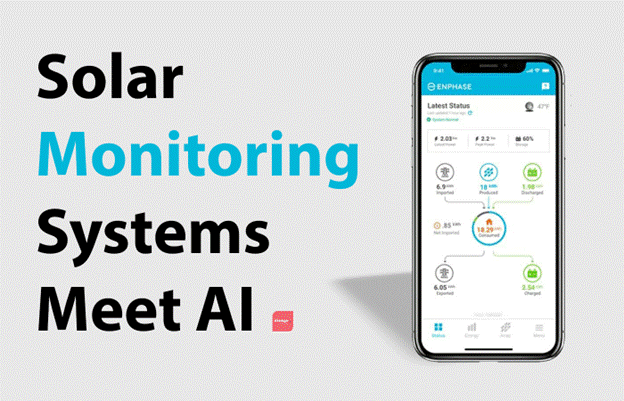Solar energy has evolved from a simple rooftop setup into an intelligent energy solution powered by data and more recently AI. A modern solar monitoring system now does more than measure output, it learns from your personal electricity usage and helps you optimise savings in real time.
With your solar panel system and battery feeding live data to cloud-based monitoring software, homeowners can identify performance issues instantly. These systems track daily production and send alerts directly to your mobile app when your solar power performance dips below expected levels.
From a monitoring system to a predictive system
Traditional systems focused on tracking, while AI-powered monitoring systems now predict. Through algorithms and machine learning, solar monitors recognise small performance deviations and forecast future output. By analysing long-term usage and weather data, they can adjust inverters and charge controllers to maximise efficiency and save you money.
Imagine you are running a pool filter for 4 hours per day from 10am to 2pm, but now it’s summer and the Daylight Savings time has shifted, it can alert you when is the most efficient time to get run your filter.
These predictive models operate like an energy bill guardian by identifying patterns in self-consumption and helping you compare how your solar electricity performs across seasons. The result is a more efficient and optimized solar power system.
Key features of an AI solar monitoring system app
AI-enabled solar monitors come equipped with sensors, consumption monitoring, and instant alerts. Most setups use Wi-Fi or a cloud-based PowerSensor app to deliver insights directly to your smartphone. You can view live data to measure energy export to the grid, and optimize how your solar inverter distributes power across your solar system. This lets you operate your setup efficiently and maintain consistent performance.
Benefits that go beyond the dashboard
An AI-driven solar monitoring system delivers more than pretty graphs. It reduces electricity bills by fine-tuning your power use and spotting wasted energy before you do. It can detect things like:
- When your battery isn’t charging efficiently
- Shade reduces panel output
- Wasted power spikes that are not going to good use.
The system also helps you extend equipment life by flagging anomalies early. A small fault today could mean a costly inverter replacement tomorrow. With these insights, homeowners gain a comprehensive view of their total system and can invest confidently in ongoing upgrades or expansion.
Solar analytics integration with smart homes and Virtual Power Plants
Modern systems don’t work in isolation, but are integrated with home monitoring apps and smart meters, and even third-party monitoring tools like Solar Analytics or PowerSensor Solar Monitor. These devices can export real-time data to energy retailers and dynamic tariff plans, ensuring every watt is used or sold at the right price.
Some AI systems already support DIY installation kits, offering easy setup and compatibility with both single-phase and hybrid battery systems. Whether your system operates off-grid or on-grid, AI monitoring enables more accurate forecasting and smarter load control.
The energy bill advantage of AI monitoring apps
AI doesn’t replace homeowners — it empowers them. Real-time insights let you identify inefficiencies, compare consumption trends, and take control of your solar usage from anywhere. With remote monitoring, you can check your system’s health instantly and save hours of manual testing.
Most importantly, these technologies help you optimise solar performance while staying aligned with your lifestyle and electricity plan. A proactive approach means lower bills, higher ROI, and a more sustainable household.
Where solar ownership is heading
As AI matures, solar monitoring systems will connect entire communities through shared grids and virtual power networks. Each home’s monitoring data will feed into algorithms that balance generation and demand in real time, making the energy grid smarter and more resilient.
Once you own a solar system, understanding how to monitor and manage it effectively is key to maximising performance — learn more about managing and maintaining your solar investment.
Solar power has always been clean — now it’s becoming clever. With AI-driven monitoring software, solar systems are evolving from passive generators into active, self-optimising devices. As these systems grow more sophisticated, they’ll transform how households measure, track, and improve their energy efficiency — bringing us closer to a world where solar power truly manages itself.

